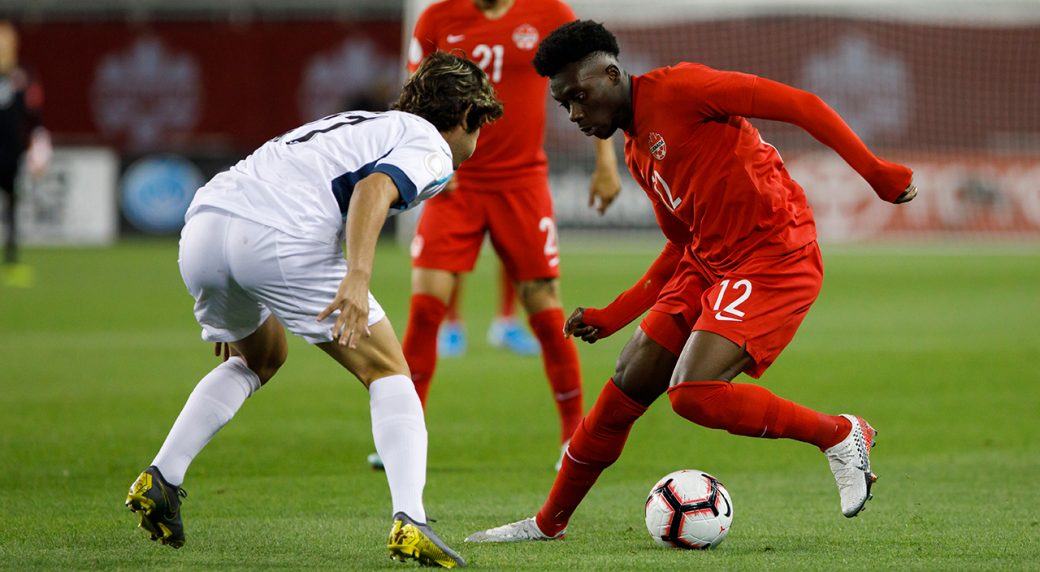The 16-month wait is over.
Canada's men's national team will finally play a competitive match when it begins World Cup qualifying this Thursday against a Bermuda side that's been impacted by a COVID-19 outbreak.
Three days later, Canada faces the Cayman Islands in its second qualifier. Both matches will be played on neutral ground at IMG Academy in Bradenton, Fla.
With a long layoff between games and another qualifying campaign starting, here's everything you need to know as Canada begins the long road to the 2022 World Cup.
How does Concacaf qualifying work?
With the COVID-19 pandemic drastically altering all aspects of life, international soccer was not immune, especially in Concacaf.
The 2022 World Cup kicks off in November 2022, which leaves FIFA with a handful of international windows to squeeze in qualifying. As a result, Concacaf has a new format.
Canada starts in the first round based on its FIFA ranking. It was drawn into Group B with Bermuda, the Cayman Islands, Aruba and Suriname. Each team plays each other once.
#CONCACAF 2022 WCQ DRAW#CanMNT learns its fate as John Herdman's side is drawn against Suriname, Bermuda, Cayman Islands, and Aruba.
All of Canada's matches are available on OneSoccer. First two windows in Oct. and Nov.
MORE INFO https://t.co/7Ic7Jjbqvj pic.twitter.com/mkG0qoIjYi— OneSoccer (@onesoccer) August 19, 2020
The six winners of each group in the first round advance to the second phase. Should Canada progress, it faces the Group E winner, likely Haiti, in a two-legged playoff in mid-June.
The victor then reaches the final eight with the United States, Mexico, Costa Rica, Honduras, Jamaica and the other two winners from the second round.
Every team plays home and away against each other for a total of 14 matches. The top three automatically qualify for the World Cup with fourth place reaching an inter-confederation playoff, likely against the side that qualifies from Oceania.
Who was called up for Canada?
Coach John Herdman unveiled a strong 24-man squad on paper, all things considered.
Canada Soccer Announces Men’s National Team Roster for FIFA World Cup Qatar 2022™ Qualifiers
STORY https://t.co/u6kRUFYHw1#CANMNT pic.twitter.com/P7kvJucLRp— Canada Soccer (@CanadaSoccerEN) March 23, 2021
While Alphonso Davies made the cut, Jonathan David couldn't join due to France's quarantine regulations when arriving from abroad. The likes of midfielder Jonathan Osorio, plus defenders Doneil Henry and Scott Kennedy were left off due to injury.
The squad includes seven uncapped players, including recently committed centre-back Ricardo Ferreira. Goalkeeper Dayne St. Clair, defenders Cristian Gutierrez, Alistair Johnston, Frank Sturing, Joel Waterman and forward Theo Corbeanu are the other uncapped players.
Veteran midfielder Atiba Hutchinson is back on the fold, too, and should be named captain with Scott Arfield missing out, which continues to be a complex situation.
"He's been pretty vocal in his motivation in playing for Canada," Herdman rebutted. "Playing these Nations League games has been frustrating for him ... Every game for two years was against a team you're beating 5-0, 6-0 and then you get to a Gold Cup and you get one game against a Mexico. In people's minds, you've got to think of the motivation of these guys that got to get on 13-hour flights, they've got to leave their families behind, COVID hits and there are new realities there."
Luckily for the coaching staff, Hutchinson remains an option.
How will Canada line up?
Even Canada's coach admitted it shouldn't be difficult to predict a starting 11 given the European players are in mid-season form compared to their Americas-based teammates.
"You've got to go with guys that are confident," Herdman stated. "You've got to go with guys that are in match rhythm and match readiness. Then obviously you've got to try and think about guys that have played together, guys that understand each other."
With that in mind, here's a potential lineup for Thursday's game against Bermuda.
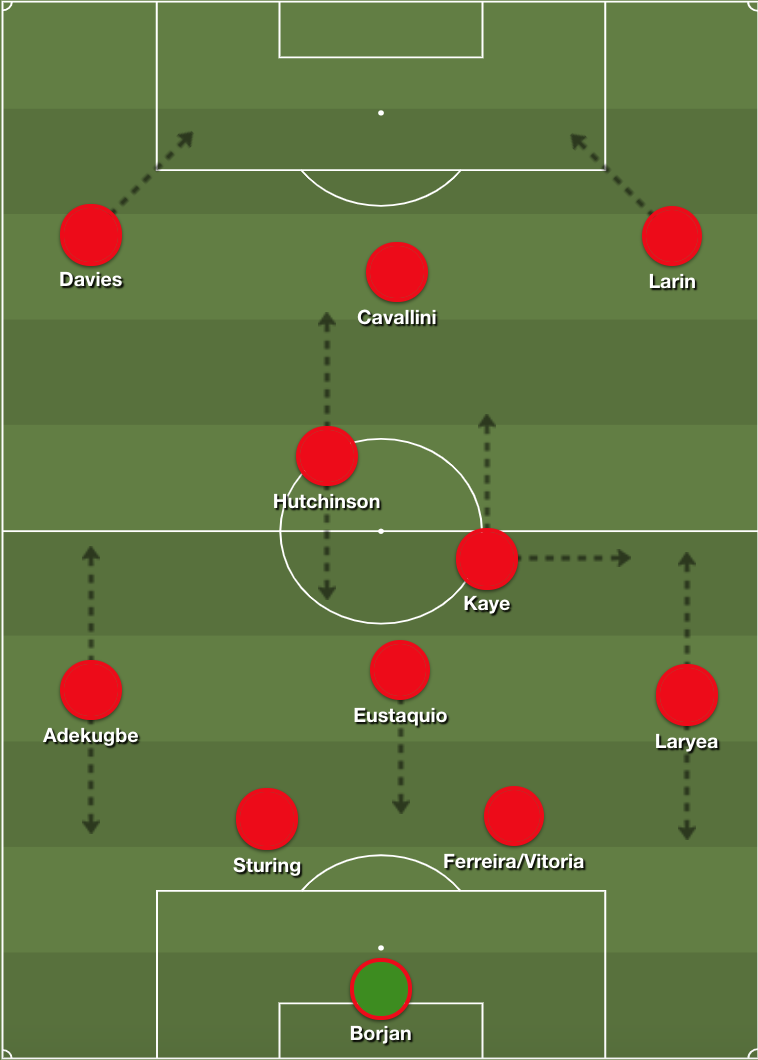
This means up to seven players who are in-season would be starting. Given that there are only two training sessions prior to Thursday's game, it's a huge advantage to utilize match-fit players who'll mainly rely on reflex.
"Part of the analysis in preparing the team, we've had to be a bit more pragmatic and look at what club habits and where they've been effective for their clubs," said Herdman.
The only question mark is centre-back. Frank Sturing seems like a clear choice as he's been deployed as a left-sided centre-back with Den Bosch in Holland this season. Sturing also has the technique, vision and ability to play in a high line, as was explained at length after his impressive showing at the January camp. In addition, Canada will surely use a high line defensively in both games with its opposition likely sitting in low blocks to absorb pressure.
"Technically, [Sturing's] a very sound centre-back. Sort of one of those modern centre-backs, technically ... He's been at a professional training environment, he's in-season, he did a very good job in January.
"He's probably going to have a role to play in these next few games."
Ricardo Ferreira hasn't played competitively since December and is without a club. Steven Vitoria is playing regularly at Moreirense in Portugal, though he lacks Ferreira's technique and the necessary pace to play at the back.
That is why Stephen Eustaquio starting in front of the defence would be the ideal choice. No Canadian player has boosted his national team stock more than Eustaquio thanks to his brilliant stint with Pacos de Ferreira. Not only can he progress the ball through tight spaces, he's defensively active as well, as noted in the pressure regains, tackles and interceptions categories in his statistical radar.
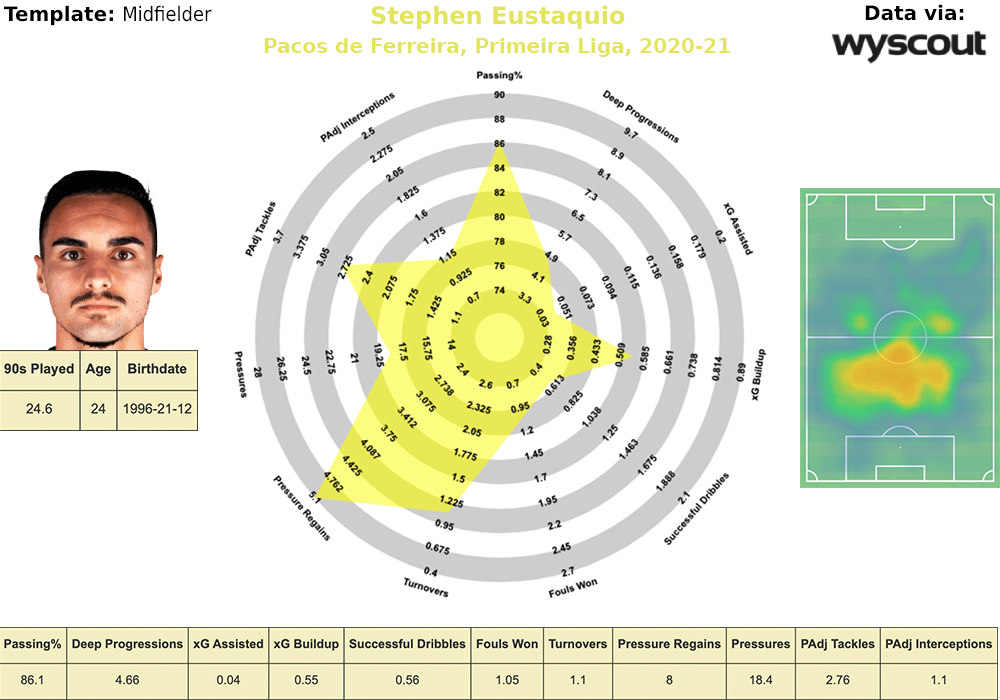
Add two more all-action midfielders in Hutchinson, who's been deployed in an advanced role with Besiktas this season, and Mark Anthony-Kaye, it'll be a challenge to outperform that trio.
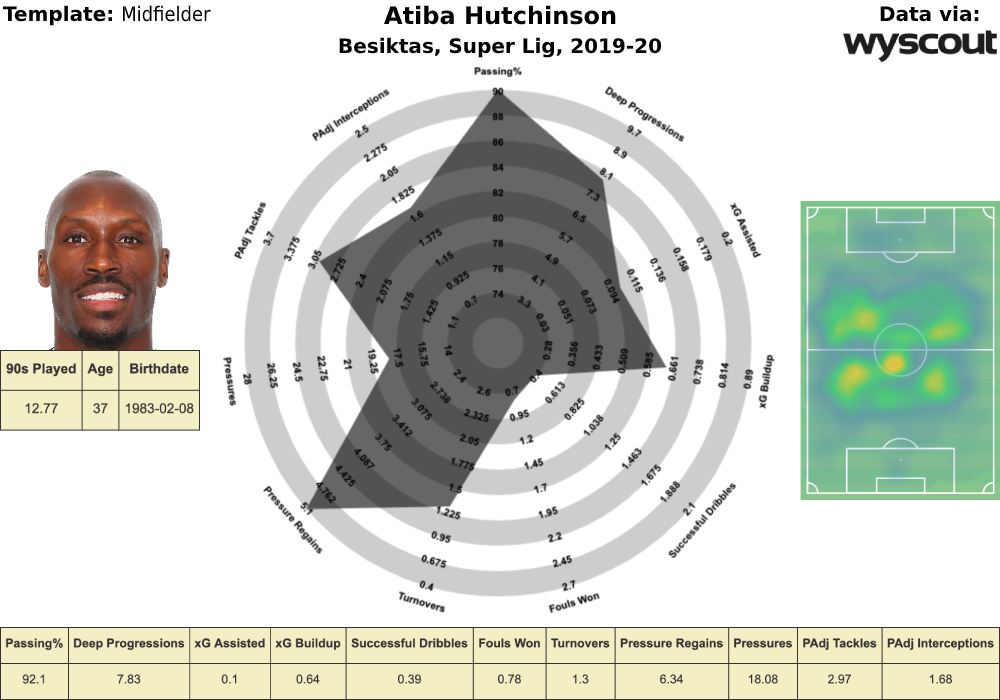
The frontline should be fairly straightforward based on who is match fit. Cyle Larin is one of the Turkish Super Lig's top scorers this season in a wide-forward role. Alphonso Davies injects improvisation, pace and a scoring threat on the opposite flank. That leaves Lucas Cavallini as the only remaining No. 9.
Who are the players to watch?
Sturing and Eustaquio are two intriguing names to follow during this window for the reasons stated above.
Davies is an obvious choice but not just based on his talent. The Bayern Munich star was listed as a forward by Canada Soccer, and it wasn't just for show, either.
"That is the role he'll be playing in this environment," Herdman claimed. "But as I say, he has that flexibility, so [with] in-game changes, very quickly he could start at full-back and end up in a wide forward position. In some games, we can operate with more of a wingback.
"I think he wants to be known, when he wears his Canadian shirt, as a forward and I'm happy to list him there. ... But where we play him, that always is a conversation between me and him and then what the tactics are for the game."
Even if it's for one or two games, the Davies-at-left-back-or-forward debate within the national team may be quelled.
Last but not least, Larin is arguably the in-form Canadian player, let alone forward. Most of his 14 goals have been scored as a wide forward on the left or right wing at Besiktas, and it may be his long-term position with Canada.
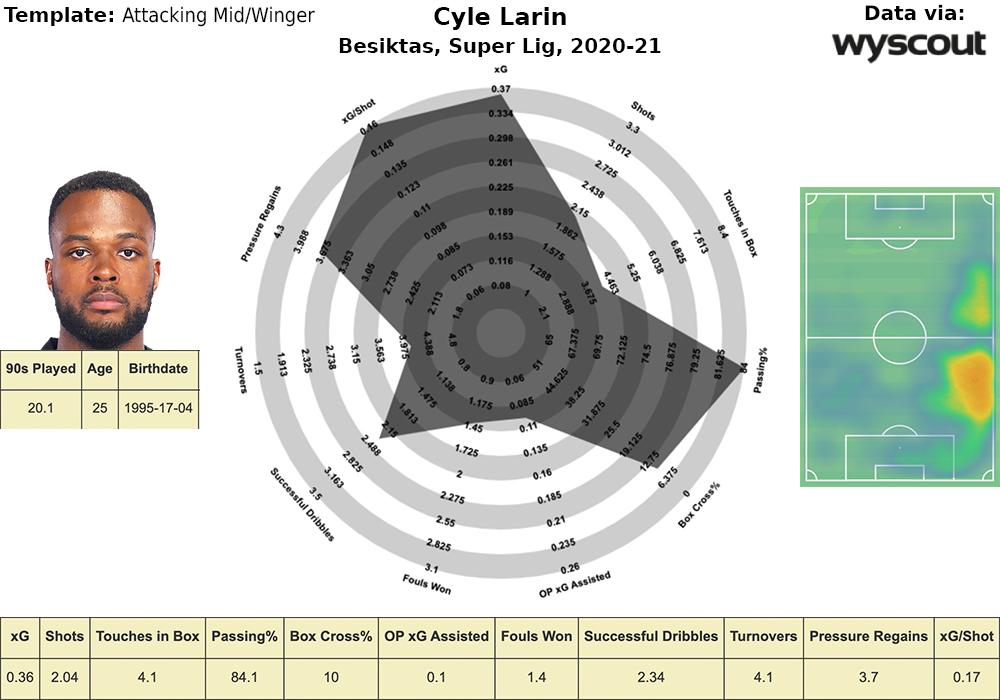
"I never thought Cyle has been best-suited to that out-and-out No. 9," Herdman said. "When you see him for Besiktas playing in that role where he's a sort of loose wide forward and he's able to just play in those half-spaces in between lines. His greatest strength is how he ghosts in the box in those deep positions.
"For the first time, probably in his career, he's been able to not worry about not being marked by two players and always locked up by two centre-backs. Now he's able to use his instincts to find those areas of separation, those gaps in the box that are appearing naturally."
Those traits paid immediate dividends in November. It carried into 2021. The hope for Canada is that Larin's form transcends club performances.
